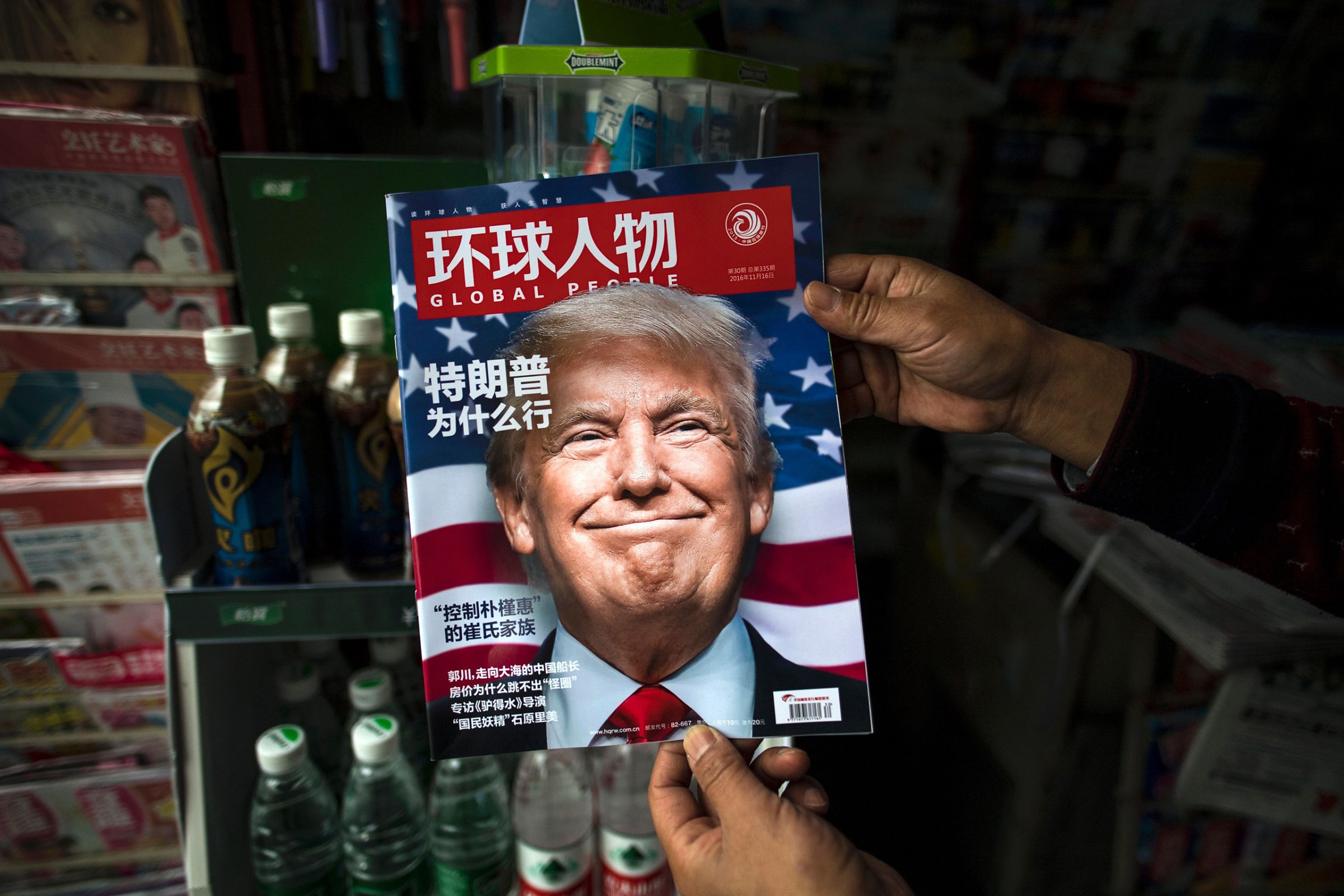
Let’s start with the numbers: Five. Ten. Six hundred. That’s five nuclear tests in the past decade; enough plutonium to make 10 nuclear warheads; and the ability to launch ballistic missiles at least 600 miles, and perhaps far longer. That’s the arsenal at the disposal of North Korea’s Kim Jong Un. Emphasis on un — untested, unlearned and unpredictable. He is also, at 32, relatively young, morbidly obese, possibly addicted to opioids and possessed of a really bad haircut. But he is not irrational, a mistake some observers make. He follows priorities learned from his father and grandfather — ruthlessly maintain internal power, cling to weapons of mass destruction and cast South Korea and the U.S. as villains.
To say that he is prone to hyperbole does a disservice to the word. In addition to announcing that he will turn South Korea into “a sea of fire” (where roughly 30,000 U.S. troops, their families and thousands of U.S. citizens live), he frequently threatens the U.S. with direct nuclear attack. Last August he applauded his nation’s submarine launch of a subsurface missile.
U.S. responses to North Korea have been erratic over the past several decades, essentially ping-ponging between public negotiations, backroom bargaining with China and operational saber rattling by military forces. Nothing has altered the trajectory of Kim; his nuclear ambitions and actions have both expanded since he took power in 2011. The most demonstrative action by the Trump Administration was, characteristically, a tweet from President Trump just after the New Year, when he said, “North Korea just stated that it is in the final stages of developing a nuclear weapon capable of reaching parts of the U.S. It won’t happen!” I hope he is right, but as the saying goes, “Hope is not a strategy.” What is a good strategy for approaching the manifest challenges of North Korea and Kim Jong Un?
We have to recognize that all roads lead to Pyongyang through Beijing. Despite the Trump Administration’s desire to get tough with China, we will need political capital with President Xi Jinping to enlist his help. Without China, further sanctions are meaningless. An open dialogue and the outline of a plan are critical. We may have to moderate our approach on Taiwan (falling back to the “one China” policy, which Trump has questioned) and ease our opposition to China in the South China Sea. Geopolitics, like life, is full of choices.
North Korea is a team sport. Our allies and friends — South Korea, Japan, Australia, Vietnam, Malaysia and others — all agree on the challenges. We should leverage their participation in diplomatic and economic initiatives to deal with the North. And we’ll need to conduct frequent allied exercises to leverage joint operational capability in things like missile defense.
Special operations and cyber will be of use if we are forced to take dramatic action. Especially alongside South Korea, we can create robust Special Forces packages that are prepared to conduct precision operations directed against leadership, infrastructure and, of course, nuclear forces. At the far end of the spectrum of violence, we should be ready for a conventional strike using long-range bombers, in which we’d want to be able to operate from forward U.S. Pacific bases in Guam and in Japan. The head of U.S. Pacific Command should prepare such plans and options for Trump–and is probably doing so.
Missile defense is an element that will be crucial to defend both South Korea and Japan. We need to get our top-notch systems in place to defend against an attack, using either conventional or nuclear weapons. This means deploying Terminal High Altitude Area Defense (THAAD), the maritime-based Aegis Ballistic Missile Defense and more tactical defense systems like Patriot.
Perhaps most important, we will need an economic carrot-and-stick approach. As we have in the past, we can trade carrots such as trade, reduced sanctions and food assistance for participation in meaningful talks. At the same time we will need to articulate and truly threaten to impose deeper economic sanctions.
All of this thinking must be done by a unified and coherent principals committee of the National Security Council. Having real experts at the table–like the Chairman of the Joint Chiefs of Staff, the head of U.S. Pacific Command and the Director of National Intelligence–is crucial. Including political actors like Steve Bannon makes little sense.
In the end there is no silver bullet. But the sooner we start dealing with Kim, the better. He will otherwise pop up at the worst times, influencing broader, more important relationships, notably ours with China. We have to get ahead of the problem to move a strategic global agenda forward.
Stavridis is dean of the Fletcher School of Law and Diplomacy at Tufts University and a former Supreme Allied Commander at NATO
More Must-Reads From TIME
- The 100 Most Influential People of 2024
- Coco Gauff Is Playing for Herself Now
- Scenes From Pro-Palestinian Encampments Across U.S. Universities
- 6 Compliments That Land Every Time
- If You're Dating Right Now , You're Brave: Column
- The AI That Could Heal a Divided Internet
- Fallout Is a Brilliant Model for the Future of Video Game Adaptations
- Want Weekly Recs on What to Watch, Read, and More? Sign Up for Worth Your Time
Contact us at letters@time.com